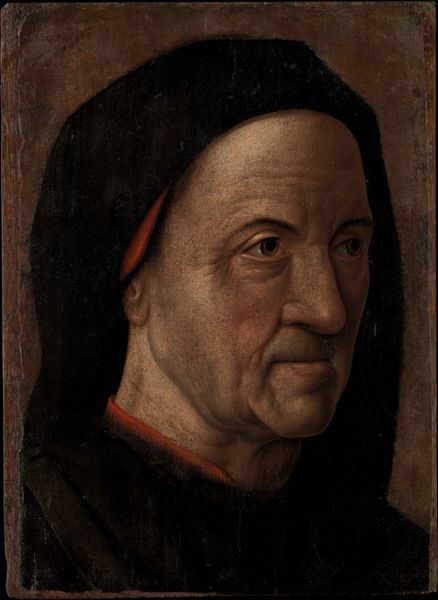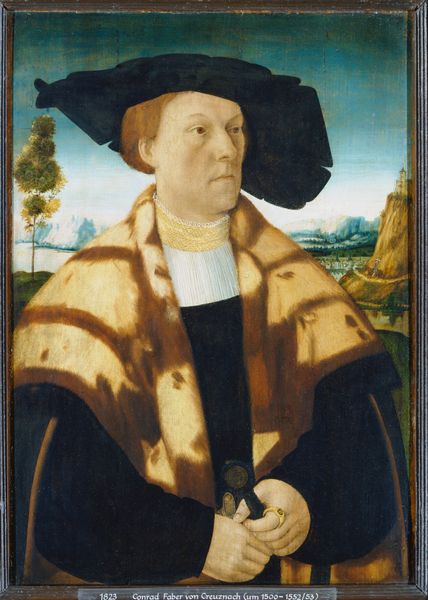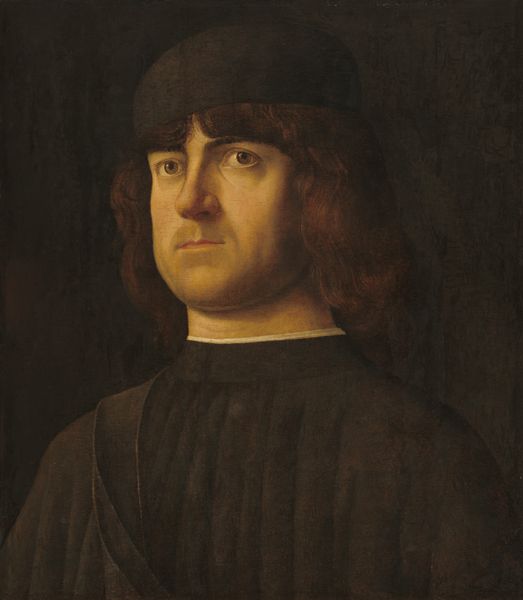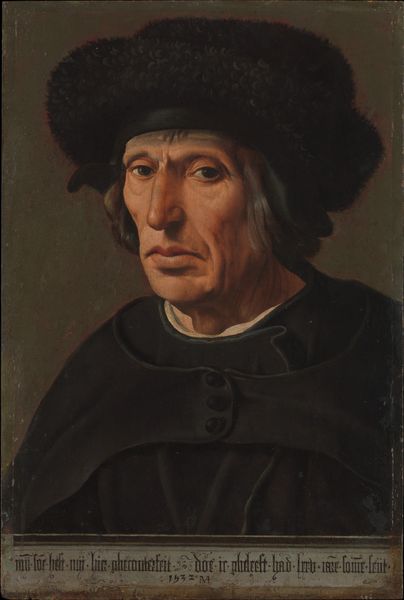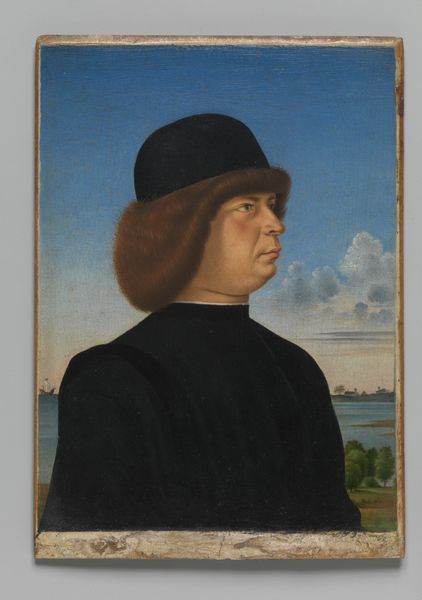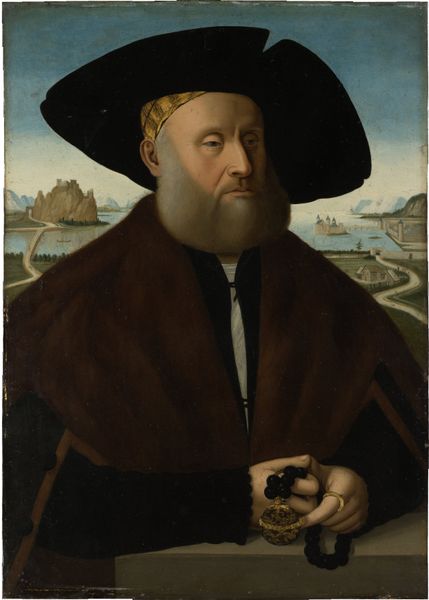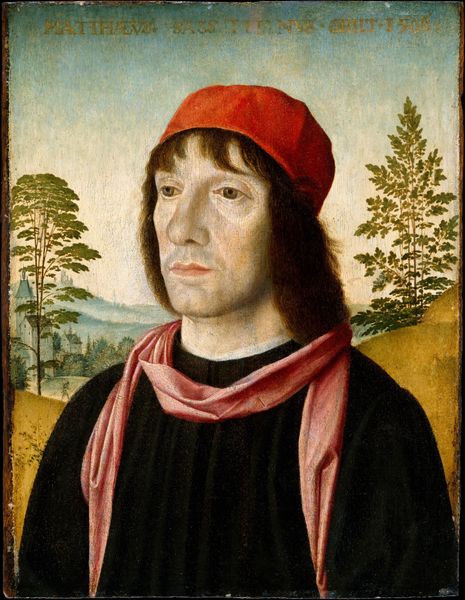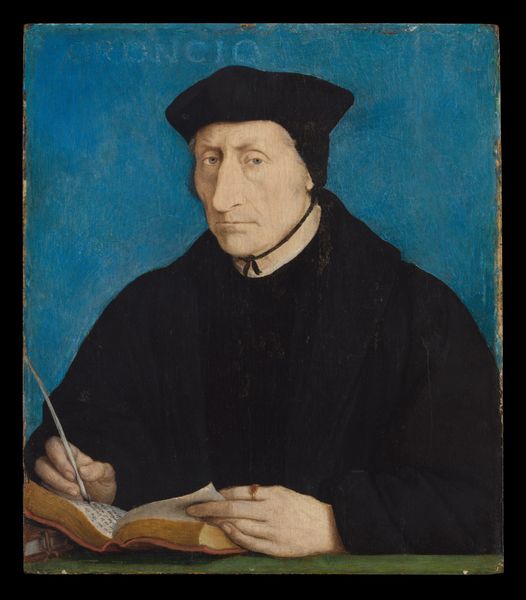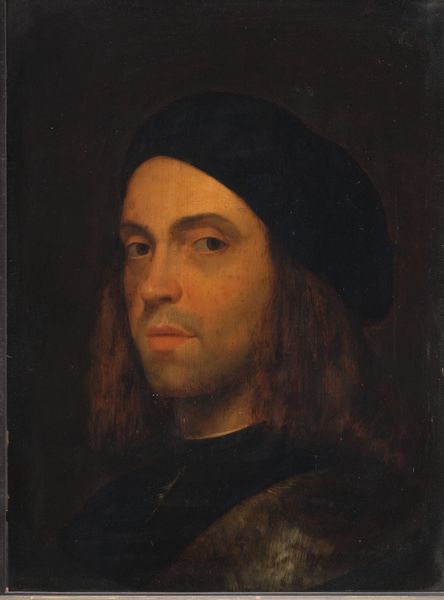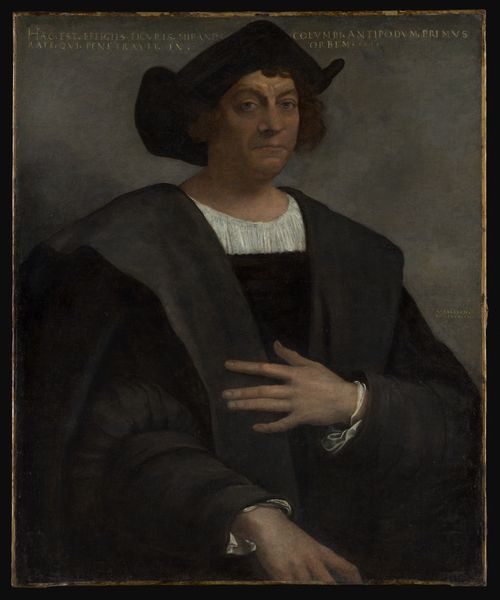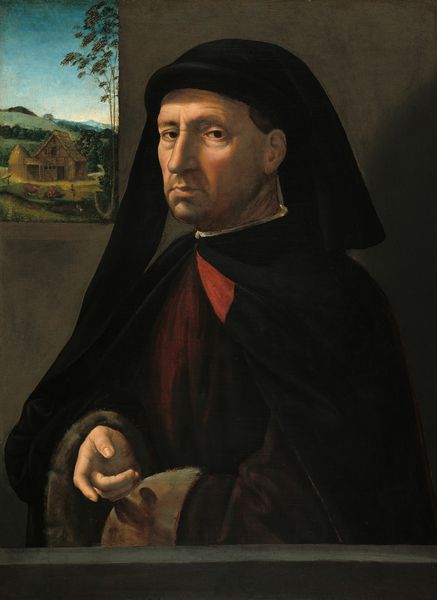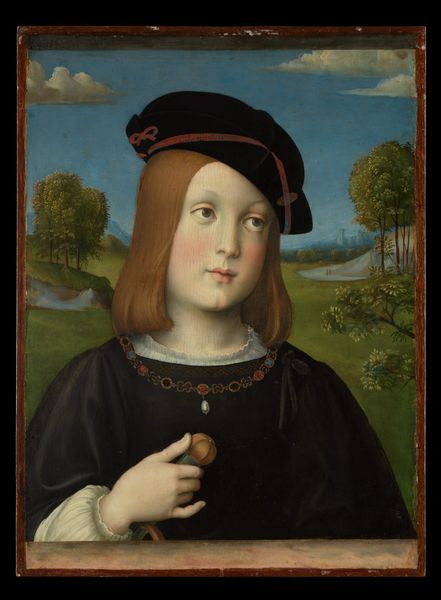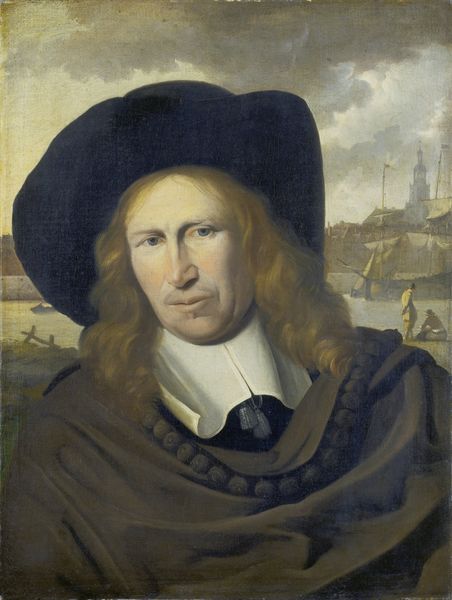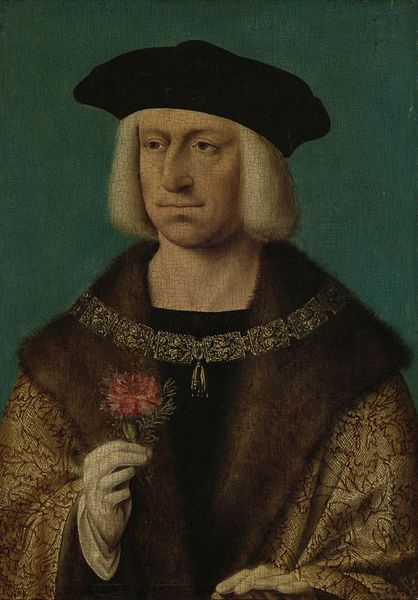
Portrait of the Venetian Painter Giovanni Bellini (?) 1511 - 1512
0:00
0:00
oil-paint
#
portrait
#
high-renaissance
#
venetian-painting
#
oil-paint
#
oil painting
#
portrait head and shoulder
#
history-painting
#
italian-renaissance
#
realism
Dimensions: 80 cm (height) x 66 cm (width) (netto), 110.9 cm (height) x 97 cm (width) x 9.3 cm (depth) (brutto)
This oil on canvas painting, Portrait of the Venetian Painter Giovanni Bellini (?), was likely made by Titian sometime in the 16th century. The painting's somber mood is achieved through the layering of dark pigments, a labor-intensive process that would have required grinding minerals and mixing them with oils. The texture of the canvas, though now obscured by age, would have provided a subtle, tactile ground for the paint. Note how the artist captured the soft folds of fabric and the smooth texture of skin, all through skillful manipulation of a viscous material. The materiality of paint itself—its capacity for layering, blending, and capturing light—was central to the Venetian Renaissance style. Titian’s mastery came not just from technical skill, but from an intimate understanding of his medium. The work involved in producing these effects—the sourcing and preparation of materials, the methodical application of paint—reflects a deep investment in the craft of painting. Looking closely, we realize that the true subject of the painting is not just the sitter, but the possibilities of oil paint itself.
Comments
statensmuseumforkunst almost 2 years ago
⋮
Did Tizian paint this as a portrait of his old master, the famous painter Giovanni Bellini? Or are we look ing at a different person, unknown to us? Scholars have compared the portrait with the very few surviving images that have been positively identified as portraits of Bellini. Both sides of the argument have valid points, so the matter cannot be settled by the studies made so far. Regardless of the identity of the sitter, however, we are convinced that the model existed and looked exactly as he is portrayed. The effect of reality, and hence the picture's ability to convince, is strong. Tizian lives up to the ideal of mimesis (life-likeness) that the Renaissance had adopted from Antiquity. The writings on art written by the historian Pliny the Elder in the 1st century were particularly popular. Here, Pliny speaks of the illusionistic prowess of the artists of antiquity, and those artists were staged as ideals in Tizian's own day. They became indisputable standards to be matched or even surpassed.
Join the conversation
Join millions of artists and users on Artera today and experience the ultimate creative platform.
statensmuseumforkunst almost 2 years ago
⋮
During the Renaissance era the status of the artist grew: from being a craftsman he became the equal of noblemen. Directives from the era recommended that noblemen should be clad in dark colours and show calm, subdued hand movements. This painting deviates from those rules: the sitter pushes his hand, which is holding a fold of his garments, out towards the left while he himself is looking to the right. The resultant dynamism in the figure is unusual for the time, when most portraits were static. The hand is the creative hand of the painter. The face is directed away from a neutral black background out towards a landscape of trees and shepherds; this may be a nod towards the artist's tutor Gentile Giovanni, who is known for such landscapes. This is an early portrait by Tizian. It is believed that the portrait shows Giovanni Bellini, who was the brother of Gentile. Bellini was the Republic's official painter, and so Tizian has depicted him in the black dress of office worn by leading merchants and the nobility
statensmuseumforkunst almost 2 years ago
⋮
This Renaissance landscape depicts nature in a convincing manner. It is obviously autumn and obviously afternoon, the leaves on the trees are brownish, and we can almost feel the cool air slowly wafting through the scene as the light of the sun dims. But a Renaissance landscape will never simply be a naturalistic rendition of natural scenery. Here, the landscape acts as a supplement to the figure. The man is in the "autumn of his life". He directs his gaze outward at the weak, dwindling autumn light and inwards before he must, in just a moment, turn around and enter the black room where Death awaits. Perhaps there is a slightly bitter twist to his mouth, perhaps we can see sorrow in his eyes, but he looks at the landscape and accepts his fate with stoic calm and dignity. Ageing is inevitable and simply a part of the cycle of nature.
statensmuseumforkunst almost 2 years ago
⋮
According to the Italian artist and historiographer Giorgio Vasari’s (1511-1574) biography from 1568, Titian studied under Gentile Bellini (1429-1507), whose brother - and fellow artist - is believed to be the person portrayed here. A nod to Bellini Titian divided the background into two parts – a dark, uniform surface and a narrow glimpse of a rolling landscape with shepherds – as a nod to his old master, for Giovanni Bellini was among the artists who introduced this particular element in Venetian portraits. Introducing movement to the painting Titian added a new element to the traditional static pose: the model’s gaze and the twist of the body go in different directions thereby introducing movement. As the official painter of the Republic, Bellini chose to be portrayed wearing his official dress, a black costume worn by doctors, lawyers, civil servants, merchants, and aristocrats. At the time, the Sala del Maggior Consiglio in the Ducal Palace was just about to be decorated. The young Titian vied with his far older mentor and many other Venetian painters for a portion of the commission. It is possible that Titian’s objective with this portrait was to prove that he could paint as well as his master - even surpass him by introducing new dynamics.
